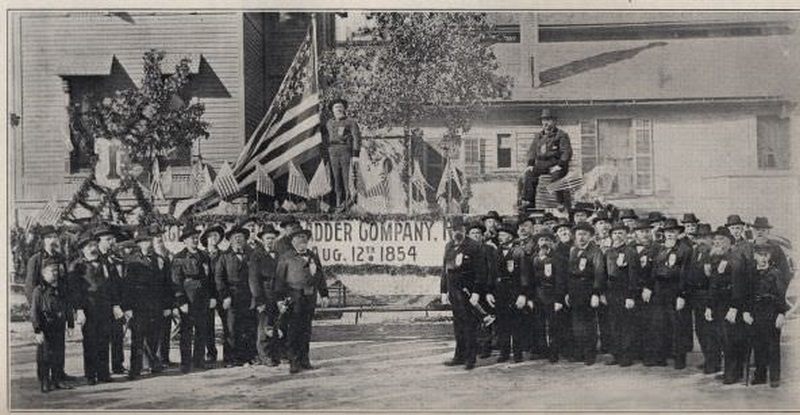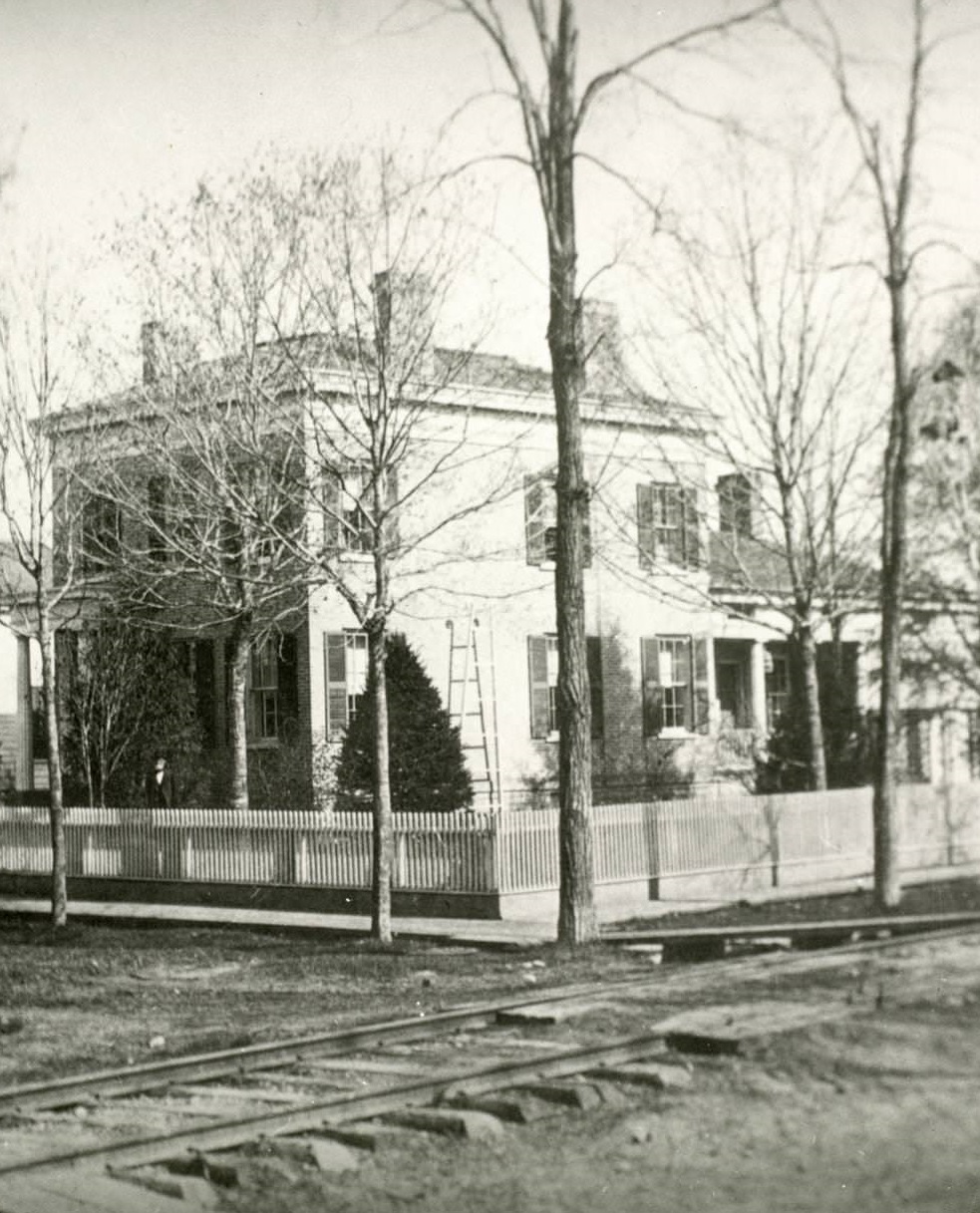Milwaukee’s population grew from a handful of fur traders to more than 20,000 settlers between 1835 and 1850. Three villages were established: Juneau’s, east of the Milwaukee River and north of the Menomonee; Byron Kilbourn’s, across the Milwaukee from Juneau’s; and Walker’s Point, across the Menomonee. They were incorporated as a single city in 1846. Milwaukee rivaled Chicago in size, wealth, and potential at the time, but Illinois’s railroad and telegraph connections enabled it to surpass Milwaukee in 1848. An influx of German immigrants arrived between 1846 and 1854, bringing them expert industrial skills, refined culture, liberal politics, and Catholicism. Milwaukee quickly became a center for brewing, grain trading, and the foundry, machinery, and metal-working industries.
Milwaukee’s founders had a vision for the city. It was ideally situated as a port city and production distribution center. During the middle of the 19th century, wheat farmers dominated the new state of Wisconsin. In the early 1860s, Milwaukee became one of the largest wheat shippers as a grain trader. Processing industries, such as flour-milling, meatpacking, leather-tanning, and brewing, turned Wisconsin’s agricultural bounty into useful products. Manufacturing became Milwaukee’s lifeblood in the late 1800s, and Milwaukee produced steam engines, agricultural machinery, electrical equipment, mining shovels, and automobile frames. Wisconsin was the second-ranked wheat-growing state by 1860, and Milwaukee shipped the most wheat worldwide. All this grain had to be transported by railroad from Wisconsin’s wheat fields to Milwaukee’s harbor.
#1 German Market, Milwaukee, Wisconsin, 1860
#2 National Home for Disabled Soldiers. Milwaukee, Wisconsin, 1867
#3 Elks Carnival Parade on Milwaukee Street in August of the late 1800s.

Photo one, on the corner of River and Milwaukee Streets, includes views of the Hall, Sayles and Fifield Jewelry Store, Sarasy Drugs, and Kimball Undertaking as well. In the street are horse-drawn carriages, stores with awnings, and a man on a bicycle are seen: Photo two shows the parade crossing Milwaukee Street bridge. Chauncy Miltimore leads the parade on horseback followed by a a marching band.
#4 Milwaukee Street, 1860
#5 Schend Tavern, 1860s
#6 Milwaukee Street looking west in 1850
#7 St. Paul’s Church, 1860
#8 First Milwaukee Railroad Depot, 1865

Elevated view of the first Milwaukee railroad depot, which was used by the Milwaukee & Waukesha and the Milwaukee & Mississippi railroads. The Milwaukee & St. Paul Railway acquired the Milwaukee & Mississippi Railroad in 1868 and later diverted the passenger trains to the Union Depot on Reed Street. The presence of passenger cars to the north of the depot suggest that this picture was taken shortly prior to that move.
#9 Hook and Ladder Company No. 1., 1865
#10 German Market, 1866

Stereograph. This building, which was destroyed by fire in 1866, was located in the commercial district known as Market Square. The Square was actually a triangular piece of land which extended from East Water Street near Mason to Market Street at Juneau Avenue. From the middle of the nineteenth century on, it served as a social center for German-American civic life and included shops, beer halls, boardinghouses, and meeting halls. In the image, the large building has wings with roofs that step down two-levels out to each side. A group of people stand on the right. On the left are more storefronts with awnings
#11 West Water Street south from Spring Street, 1867
#12 Commercial Area near Lake Michigan, 1868
#13 Emil Wallber House, 1868

Exterior view of the Emil Wallber house with four people standing near the entrance. Wallber was the mayor of Milwaukee from 1884-1888. The location of the house was probably 604 Galena Street at its intersection with Sixth Avenue. This house was reported to be the first brick house to be moved in the city.
#14 The Cathedral in Milwaukee, 1856
#15 Hyatt House Hotel, 1856

Hyatt House Hotel and its environs before the hotel burned down: A. Hyatt Smith built the Hyatt House on the site of the old Stevens House Hotel on the west side of the Rock River around 1856. The Stevens Hotel burned down on April 1, 1853. West Milwaukee and Franklin Street is the 2005 corner on which this hotel stood. Five stories high and built of brick, the Hyatt House was the most elaborate of the city's nineteenth-century hotels. Its dining room could seat 400-500 guests at one time. The building was destroyed by fire on October 12, 1867. Chester A. Arthur is said to have stayed at the Hyatt House in 1857, before he was president, when he was on a tour of the West on a prospecting trip. Stephen A. Douglas, a Democratic candidate for President against Abraham Lincoln, gave a campaign speech at this hotel on October 12, 1860.
#16 A lithograph from Frank Leslie’s Illustrated Newspaper of the Lady Elgin docked, 1860
#17 Galena and Minnesota Packet Company (also known as Minnesota Packet Company), 1857
#18 A levee scene with an unidentified boat at the La Crosse and Milwaukee rail road at St. Paul, 1867
#19 Home of Horace E. Clark located on the southwest corner of Market (56th) Street and West Main Street (13th Avenue), 1867
#20 Durkee House, 1860s
#21 Hyatt House Hotel, 1856

This 1856 photo shows Janesville's Hyatt House Hotel and its environs before the hotel burned down: A. Hyatt Smith built the Hyatt House on the site of the old Stevens House Hotel on the west side of the Rock River around 1856. The Stevens Hotel burned down on April 1, 1853. West Milwaukee and Franklin Street is the 2005 corner on which this hotel stood. Five stories high and built of brick, the Hyatt House was the most elaborate of the city's nineteenth-century hotels. Its dining room could seat 400-500 guests at one time. The building was destroyed by fire on October 12, 1867. Chester A. Arthur is said to have stayed at the Hyatt House in 1857, before he was president, when he was on a tour of the West on a prospecting trip. Stephen A. Douglas, a Democratic candidate for President against Abraham Lincoln, gave a campaign speech at this hotel on October 12, 1860.
#22 Milwaukee County Court House, 1865
#23 John Habercorn’s House, 1865
#24 Axtell House building, with a storefront next to it advertising “Clothing Hats Caps Sailors Outfits”., 1869
#25 Building on a corner with a Post Office sign on left side of building, Custom House sign on the right side, 1855
#26 Emmanual Dannan Memorial, 1855
#27 Bird’s-Eye View of Milwaukee, 1854
#28 Milwaukee Female College, 1852
#29 Sentinel Building at the corner of Wisconsin and Water Streets, 1850

The first floor consists of businesses run by Dewey, Highby & Wardner, and Cary & Taylor. The Milwaukee Sentinel office was on the second floor of this building. A horse is tied to the post at the right, and a cart stands in front of the building. A couple is walking on the board sidewalk


























